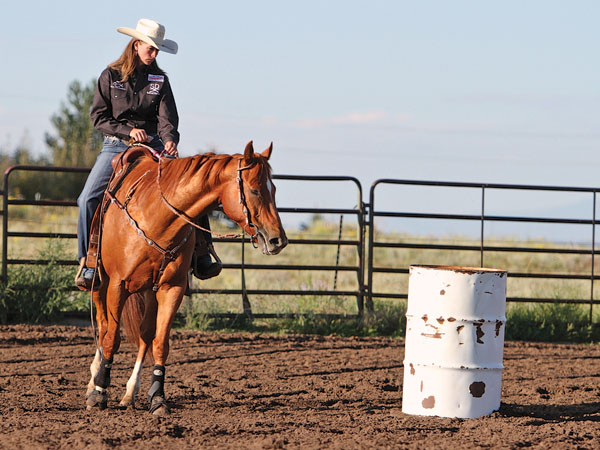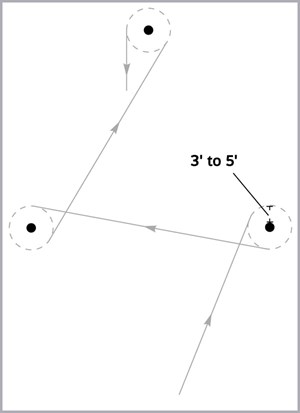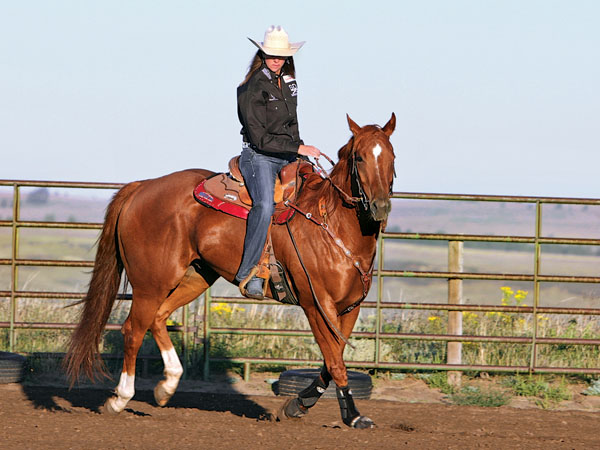Q Recently I bought an off-the-track Thoroughbred as my new barrel-racing prospect. She’s already been retrained to some extent—she changes leads, circles, and is soft in the bridle, but she doesn’t know the barrel pattern. How do I teach her the pattern, and when can I compete?

ALIZA ROBERTSON, Pennsylvania
A The key to training a horse, whether you’re a professional or an amateur, is consistency. Repetition is also a key ingredient for successfully patterning a horse. Here, I’ll outline five areas you’ll want to emphasize in your training, including my advice on the most efficient barrel pattern to follow (page 58). This is geared for barrel racing, but these rules apply to any event with a specific pattern, such as gymkhana contests.
Ride often. To be successful you need to be willing to saddle up. Trying to pack a week’s worth of drills and exercise into a few sessions will mentally fatigue and frustrate your horse. Instead, ride more often, even if for shorter periods. Try to ride five times per week, and practice around the barrels in only two to three of those sessions.
Drill the skills. You can practice your turns every day without burning your horse out simply by circling away from the pattern. Try this spiraling exercise to develop controlled, even circles that’ll become snappy, precise turns. Practice this exercise at a trot, then progress to a lope as your horse shows mastery.

Begin in a large, even circle. After a few circles, and as your mare begins to show she can maintain a uniform circle with little correction or cueing, pick up your rein in the same manner you would to cue for your turn in the pattern. Spiral your circle size down until you’re traveling in a barrel-turn-size circle. Provide a release-reward, and keep her from stalling by urging her straight out from your smallest circle and into another large, even circle, then repeat. Practice in each direction before moving on.
Keep it simple. Don’t just haphazardly approach each barrel as you pattern your horse. Plan your pattern before you start, then follow the same footpath at each practice. Following a simple, uniform path will give your horse confidence and eliminate inconsistency in each run.
The shortest distance between two points is a straight line, so that’s how to approach each barrel. At the finish of each turn, travel straight to the pocket of the next barrel (the area around each barrel in which a turn’s completed). Avoid the common mistake of flaring out away from the barrel, or “giving yourself room” as you approach your turn. This question-mark style of approach encourages your horse to dive at the barrel with her shoulder down, rather than follow a controlled, even circle with an elevated shoulder as you’ve practiced. It also causes you to cover unnecessary ground, slowing your time.
Make your turns as you’ve practiced them in the spiraling drill: even and round (see “Drill the skills”). A good rule is to keep a 3- to 5-foot space around the barrel as you turn. This gives your horse adequate space for a snappy turn, without knocking the barrel over. Adjust this distance as you learn your horse’s turning style or to accommodate a larger- or smaller-frame horse.
Master each gait. The footpath you follow around the barrels should be the same at each gait. (For a visual of what an efficient pattern looks like, refer to the diagram above.) Map the pattern out around the barrels in your arena using cones, if necessary. Then start by walking your horse through this pattern as marked. When she’s mastered the walk, move on to faster gaits, continuing along the exact pattern you taught at slower gaits. If form breaks down as you speed up, slow down and refresh the basics. Note: Practice the pattern only three or four times per session and end on a high note. By keeping on-pattern drilling short, you’ll stave off feelings of resentment and keep her enjoying her job.

When you’re able to lope through the pattern with minimal cueing and correction, begin hauling to exhibitions to make practice runs. As soon as you’ve reached this point, quit making practice runs at home and shift your everyday-riding focus to conditioning and maintenance.
Avoid this mistake. The greatest mistake I see most amateur riders make after their horse has been patterned is adding speed too soon. As you begin making exhibition runs, keep an eye on your mare’s demeanor. As she gains confidence at slower speeds, add a bit more speed and see how she does. If she’s anxious or your pattern’s good form breaks down, you’ll know she’s not yet ready for the speed you’ve asked for. Bring her back down for a few runs, then try again. Eventually you’ll be able to make full-speed runs while following the same pattern you first taught her at the walk. n
Darla Kennepohl lives in Kiowa, Colorado, where she owns and operates SDK Barrel Horses. She’s a two-time AQHA world and reserve world champion, Jim Nordick Coliseum arena record-holder, Barrel Futurities of America World Champion, and accomplished futurity horse trainer. She prides herself in training quiet, talented athletes that compete with a willing attitude.






